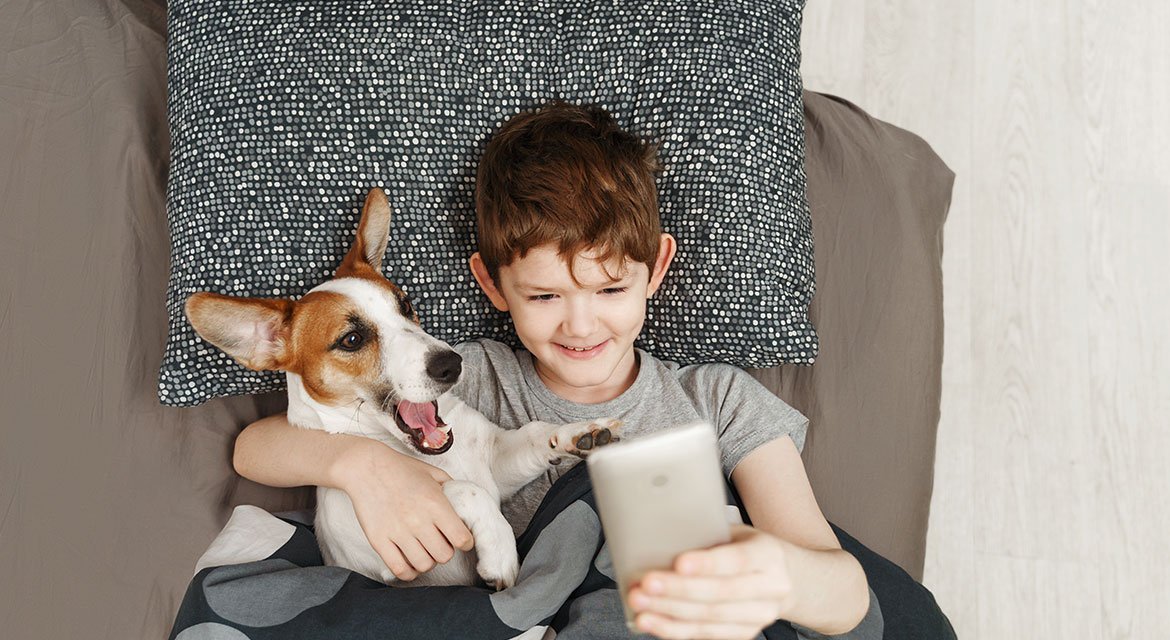No products in the cart.
 19 Aug
19 AugHow to work from home with pet
Working from home has become increasingly common, offering flexibility and the comfort of your own space. However, if you’re a pet owner, you know that this arrangement can present unique challenges. While pets can bring joy and companionship to your workday, they can also be a source of distraction. To successfully balance remote work and pet care, it’s essential to establish routines, create boundaries, and ensure your pet’s needs are met. This article will provide practical tips and strategies to help you work from home effectively while keeping your furry friend happy and content.
Establish a Routine
Pets thrive on routine, and establishing a consistent schedule is crucial when working from home. A routine provides your pet with a sense of security and predictability, helping them understand when it’s time to play, eat, and rest.
Start your day by walking or feeding your pet at the same time each morning. This helps burn off some of their energy and sets a positive tone for the day. Plan regular breaks throughout your workday to engage with your pet, whether it’s a quick game of fetch or a cuddle session. These breaks not only keep your pet content but also give you a mental refresh.
Incorporate your pet’s needs into your work schedule. For example, if you have a dog that needs a midday walk, plan your lunch break around that time. Consistency is key, as it helps your pet adjust to your work-from-home lifestyle, reducing their anxiety and ensuring they don’t interrupt you during important tasks.
Create a Designated Workspace
One of the most effective ways to manage your work-from-home setup with a pet is by creating a designated workspace. This space should be separate from areas where your pet spends most of their time. By establishing boundaries, you can help your pet understand that when you’re in your workspace, it’s time for you to focus.
Choose a room or a quiet corner in your home where you can set up your workstation. Ensure it’s comfortable and equipped with everything you need, such as a desk, chair, and necessary office supplies. If possible, select a space with a door that you can close during meetings or when you need to concentrate.
Teach your pet to respect this workspace by providing them with their own area nearby. For example, place a cozy bed or a favorite toy in a spot where they can relax while you work. This way, your pet can be close to you without being in the way.

Incorporate Play and Exercise
Pets, especially dogs, require regular exercise and mental stimulation. Without enough physical activity, your pet may become restless and disruptive, making it difficult for you to focus on work. Incorporating play and exercise into your daily routine is essential for both your pet’s well-being and your productivity.
Start the day with a brisk walk or a play session to help burn off excess energy. This can make a significant difference in how calm and relaxed your pet is during the day. If you have a high-energy dog, consider scheduling a longer walk or a trip to the park during your lunch break.
Interactive toys, puzzle feeders, and treat-dispensing gadgets can also keep your pet occupied while you work. These tools engage your pet’s mind and help prevent boredom, which can lead to unwanted behaviors like barking or chewing on furniture.
For cats, try setting up a play area with climbing trees, scratching posts, and toys that stimulate their hunting instincts. Regular playtime helps prevent them from seeking your attention during work hours.
Set Boundaries with Your Pet
Setting boundaries is crucial when working from home with a pet. While it’s tempting to let your pet have free rein of the house, this can lead to interruptions and distractions during your workday. Establishing clear boundaries helps your pet understand when it’s time to interact and when it’s time to leave you alone.
Use commands or cues to let your pet know when you’re unavailable. For example, teaching your dog to stay or go to their bed on command can be helpful during conference calls or focused work sessions. Reinforce these boundaries with positive reinforcement, such as treats or praise when they respect your workspace.
If your pet is particularly persistent, consider using baby gates or closing doors to keep them out of your workspace. However, make sure they have access to food, water, and a comfortable place to rest nearby. This way, they don’t feel completely isolated but understand that they can’t always have your full attention.
Use Pet-Friendly Work Accessories
Incorporating pet-friendly work accessories into your home office setup can make working from home with a pet more manageable. These accessories are designed to keep your pet comfortable and entertained while you work.
Consider investing in a pet bed that fits under your desk or next to your chair, so your pet can rest close by without being in the way. For cats, a window perch or a cat tree in your office can provide them with a spot to observe the outside world and stay entertained.
Noise-canceling headphones can be a lifesaver if your pet tends to be noisy or if you need to block out distractions during meetings. Additionally, pet-proofing your workspace by securing cords, keeping small objects out of reach, and using cable management systems can prevent your pet from causing disruptions.

Communicate with Your Team
When working from home with a pet, it’s important to communicate with your team about potential interruptions. Let your colleagues know that you have a pet at home and that there may be occasional background noise or brief interruptions during meetings.
Most remote work environments are understanding of these situations, especially as many people have become accustomed to the challenges of working from home. However, being upfront about your situation helps set expectations and ensures that your team is supportive.
If you have a particularly vocal pet, consider using the mute button during calls when you’re not speaking. This can minimize distractions and maintain a professional atmosphere during meetings.
Incorporate Calming Techniques
If your pet tends to be anxious or excitable, incorporating calming techniques can help create a more peaceful work environment. Calming products such as pheromone diffusers, anxiety wraps, or calming chews can help reduce your pet’s stress levels.
Playing soft, soothing music or white noise can also create a calming atmosphere for your pet while you work. Some pets respond well to being covered with a blanket or being placed in a quiet, dimly lit room where they can relax undisturbed.
Practicing mindfulness and relaxation techniques with your pet can benefit both of you. Taking a few minutes to breathe deeply, pet your dog or cat, and focus on the present moment can help reduce stress and improve concentration.
Provide Mental Stimulation
Mental stimulation is just as important as physical exercise for keeping your pet happy and well-behaved while you work from home. Engaging your pet’s mind can prevent boredom and reduce the likelihood of them seeking your attention during work hours.
Puzzle toys, treat dispensers, and interactive games are excellent tools for providing mental stimulation. You can also rotate toys regularly to keep things fresh and interesting for your pet.
Training sessions are another great way to engage your pet’s mind. Spend a few minutes each day teaching new commands or tricks, or practicing obedience skills. This not only stimulates your pet mentally but also strengthens the bond between you.
Take Breaks Together
Taking breaks throughout the day is essential for maintaining productivity and well-being, and it’s a great opportunity to bond with your pet. Use your breaks to engage in activities that both you and your pet enjoy, such as going for a walk, playing a game, or simply cuddling on the couch.
These breaks provide your pet with the attention they crave and give you a chance to recharge. Even just a few minutes of playtime or outdoor time can make a big difference in your pet’s behavior and your ability to focus.
Consider scheduling regular breaks into your workday to ensure you’re taking care of both your needs and your pet’s needs. This helps create a balance between work and pet care, allowing you to be more productive overall.
Plan for the Unexpected
Even with the best planning, unexpected situations can arise when working from home with a pet. Your pet might bark during an important call, have an accident, or demand attention at the most inconvenient times. Being prepared for these moments can help you handle them with minimal stress.
Keep essential supplies like cleaning products, treats, and toys within easy reach so you can quickly address any issues that arise. If your pet is particularly unpredictable, consider having a contingency plan in place, such as arranging for a pet sitter or dog walker if you have a busy day of meetings.
Flexibility is key when working from home with a pet. While it’s important to establish routines and boundaries, being able to adapt to your pet’s needs will make the experience more enjoyable for both of you.
Conclusion
Working from home with a pet can be both rewarding and challenging. By establishing routines, creating a designated workspace, and incorporating play and exercise into your day, you can ensure a productive work environment while keeping your pet happy and content. Remember to set boundaries, use pet-friendly work accessories, and communicate with your team about potential interruptions. With the right strategies in place, you can successfully balance your work responsibilities and the needs of your furry friend, making the most of your work-from-home experience.





